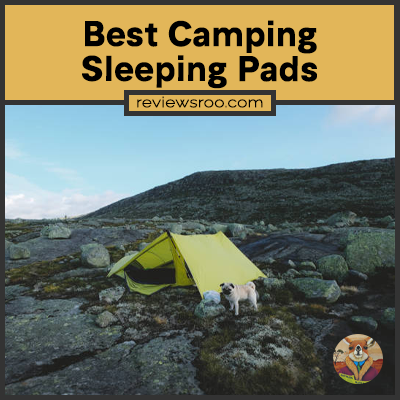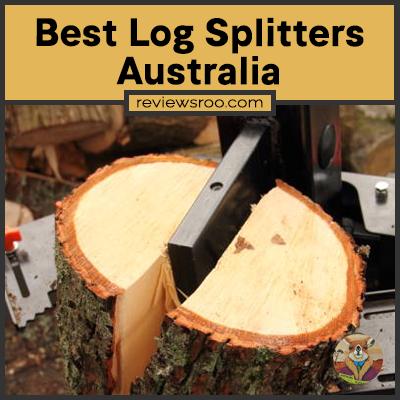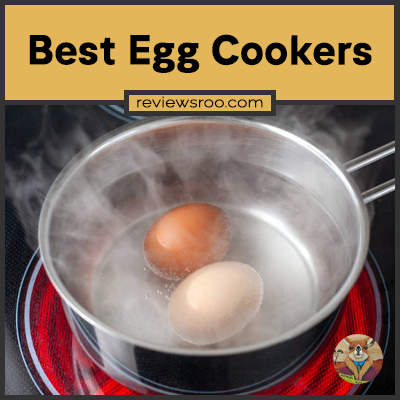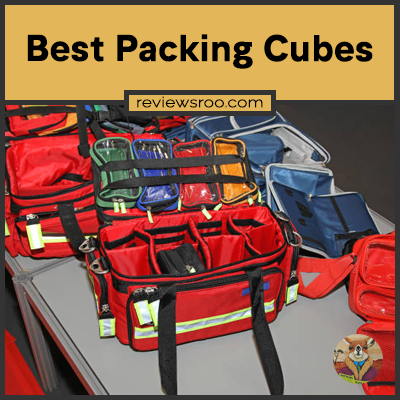Best Camping Sleeping Pads
The night sky shimmers with stars, and the air is still. Nothing stirs except for the faint crackling of the fire in front of you. You rest your head on your pillow, expecting a comfortable sleep, but something isn’t quite right. The ground beneath you is hard and uneven – not the ideal sleeping pad for a good night’s rest.

What if there was something out there that could provide ultimate comfort while camping? Something that would make a hard ground feel as soft as your bed at home? Believe it or not, it does exist! It’s called a camping sleeping pad.
In this article, we’ll discuss the best camping sleeping pads available on the market today. We’ll analyze different features such as padding type, insulation value, weight, size and durability to help you find the perfect one for all your outdoor needs. So read on to learn how to choose the best camping sleeping pad!
Types Of Sleeping Pads
Sleepin’ pads come in different shapes and sizes. They range from inflatable mattresses to simple foam or plastic rectangles. Most are lightweight, but some models are heavier and bulkier. There’s a pad for everyone’s needs.
Life outdoors can be tough on the body, so a good sleepin’ pad is key. Most provide cushioning from hard surfaces and can help insulate from cold temperatures. Plus, they’re easy to set up and take down – just unroll it, blow it up (if needed) and you’re good to go. On to the benefits of usin’ ’em…
Benefits Of Using Sleeping Pads
Sleeping pads provide comfort and warmth, making camping trips more enjoyable. They offer insulation from the cold ground, cushioning for aching bones, and a barrier between you and the bugs. Here are four benefits of using sleeping pads:
- Improved sleep quality: Sleeping on the ground can be uncomfortable and make it difficult to get a good night’s rest. Using a sleeping pad provides extra padding that helps alleviate pressure points, so you can wake up feeling refreshed each morning.
- Increased comfort: Sleeping pads provide a softer layer between your body and the hard ground, which means less tossing and turning throughout the night. Plus, they keep you warm by providing insulation against the cold ground.
- Lightweight design: Most sleeping pads are lightweight and easy to transport, making them ideal for backpacking trips or any time you need to pack light.
- Bug protection: If you’re worried about creepy crawlies in your campsite, sleeping pads can help protect against bugs by creating an additional barrier between you and the outdoors.
Sleeping pads are an essential part of any camping trip – offering increased comfort and better sleep quality while providing bug protection and lightweight portability. Moving on to buying considerations…
Buying Considerations
When buying a camping sleeping pad, there are several factors to consider. Weight and packed size are important for portability since you’ll likely be carrying the pad in your backpack. Comfort is also key, especially if you’re going to be using the pad in cold weather or on uneven ground. Look for features like an insulating layer and an R-value rating that measures how well it retains heat.
Durability is another factor to consider when shopping around. Depending on the material, some pads may not last as long as others. Also check for any warranty information from the manufacturer if you plan on using your sleeping pad frequently or for extended trips. Pay attention to reviews from other campers for more insight into the product’s quality and performance.
Popular Brands
Camping sleeping pads have become increasingly popular, with sales of camping gear increasing by 45% in 2019. When it comes to finding the best sleeping pad for your next camping trip, there are several factors to consider, including brand. This article will look at some of the most popular brands available.
Klymit is one of the leading sleeping pad brands on the market today. Their products are lightweight, yet durable and comfortable for a good night’s sleep. Therm-a-Rest is another respected name in camping and backpacking gear. They provide a variety of different styles and models to fit any budget and camping preferences. Big Agnes is another top choice for those seeking a reliable sleeping pad that won’t break the bank. They offer both airbeds and foam pads in varying sizes and thicknesses, making them a great option for campers on a budget.
These three brands offer high quality products that will keep you comfortable all night long while you’re out exploring the wilderness or just enjoying some much needed rest after a long day’s hike. Whether you’re looking for an inflatable pad or something more stable like a foam pad, these brands have something to fit your needs and budget.
Advantages Of Inflatable Sleeping Pads
Inflatable sleeping pads have several advantages. They’re lightweight, durable, and easy to transport. Plus, they provide better insulation than traditional foam pads. You don’t need to worry about lugging a bulky, heavy pad around when you go camping.
Inflatable sleeping pads also come in a variety of sizes and shapes. This means you can find one that fits your body shape, whether you’re tall or short. You can also enjoy the comfort of adjustable air pressure to increase or decrease firmness. And if you want more cushioning, there are many inflatable sleeping pads with extra layers of foam or cushioning built into them.
These features make inflatable sleeping pads a great choice for campers who want more comfort and convenience while they sleep outdoors.
Disadvantages Of Inflatable Sleeping Pads
When it comes to choosing the right sleeping pad, inflatable pads are a popular option. But they come with some drawbacks too. Let’s take a look at the disadvantages of inflatable sleeping pads.
Inflatable sleeping pads can be tricky to set up, as they require a pump or your own breath to inflate them, which can be time-consuming and tiring after a long day of outdoor activities. Additionally, once inflated, the pad is vulnerable to punctures and tears that can’t always be repaired easily in the field. This means you’ll have to carry a repair kit and know how to use it if you want to patch any holes that might appear during your trip.
Inflatable sleeping pads also tend to offer less insulation than other types of pads due to their air-filled chambers, meaning your sleep could be disturbed by cold temperatures from below. They also tend to pack down larger than other options like self-inflating sleeping pads.
Advantages Of Self-Inflating Sleeping Pads
The advantages of self-inflating sleeping pads are like a gentle hug from the outdoors; they provide campers with comfort and security. They come in a variety of sizes, materials and shapes to fit each individual’s needs. Here are four reasons why self-inflating sleeping pads should be part of your camping gear:
- They offer superior insulation for cold climates or cold nights.
- Self-inflating sleeping pads are lightweight and easily packable, making them an ideal choice for backpacking trips.
- They don’t require a pump, allowing campers to save time and energy when setting up their campsite.
- The foam core of these pads makes them more durable than inflatable options, meaning you won’t have to worry about punctures or leaks during your adventures.
Self-inflating sleeping pads provide extra cushioning for those who want to sleep soundly without sacrificing warmth and comfort. They’re also very easy to use – just unroll the pad, open the valve and let the air do its job! All in all, self-inflating sleeping pads make an excellent addition to any camping trip, offering comfort that is sure to last through countless outdoor adventures.
Disadvantages Of Self-Inflating Sleeping Pads
Although self-inflating sleeping pads offer convenience, they also come with some drawbacks. On average, self-inflating sleeping pads are three times heavier than foam sleeping pads. This can be a significant burden for campers who are looking to pack light.
Another downside to these pads is that they take up more space when packed away. This makes them difficult to store in small tents or bags. Additionally, due to their bulkier design, these types of mats are not as comfortable as thinner foam alternatives.
Self-inflating mats also have a shorter lifespan than foam mats and can be punctured more easily. If a hole develops in the pad, it can become deflated and uncomfortable overnight – leaving you with an unpleasant camping experience. For this reason, it’s important to invest in a top quality self-inflating pad and take extra precautions when packing and transporting it.
Advantages Of Foam Sleeping Pads
Foam sleeping pads have their advantages. They’re lightweight and easy to set up, making them great for camping trips. Their low cost is also appealing. Foam pads are great insulators, keeping you warm on cold nights in the wilderness.
However, they can be bulky and difficult to store. They don’t pack away as small as self-inflating pads, which can take up valuable space in your gear. Foam pads don’t offer much cushioning either; if you’re looking for something soft to sleep on, you’ll need to look elsewhere. But despite these drawbacks, foam sleeping pads remain a popular choice for campers who want an affordable solution that’s easy to use and keeps them warm during the night.
Still, there are downsides to foam sleeping pads that must be taken into consideration…
Disadvantages Of Foam Sleeping Pads
The foam sleeping pad is like a diamond – seemingly indestructible and shining with the promise of a good night’s sleep. But, just like a diamond, it also has its flaws. Let’s explore the disadvantages of foam sleeping pads.
One downside of foam sleeping pads is that they can be quite bulky and heavy when packed in comparison to other types of camping sleeping pads. This can make them difficult to carry around on long hikes or camping trips. Also, foam sleeping pads are generally more expensive than other types of camping sleeping pads because they require more material to produce.
Another disadvantage of foam sleeping pads is that they are not as comfortable as air-filled ones since they cannot be adjusted to the user’s body shape and firmness desire. Foam also tends to retain heat so these types of camping sleeping pads might not be the best choice if you’re looking for something cool and breathable during hot summer nights.
TIP: If you decide to use a foam sleeping pad, make sure you get one with an extra layer or insulation for added comfort and warmth during cold nights!
Frequently Asked Questions
How Long Should A Camping Sleeping Pad Last?
A good camping sleeping pad should last you a while. According to research, the average lifespan of these products is around 8 years. This means that if you invest in a quality pad, it should last you for multiple camping trips.
When selecting a sleeping pad, it’s important to take into account the type of material and its durability. For example, air-filled pads are popular because they provide better insulation and comfort than foam pads. However, they’re also more prone to punctures and tears, so it’s important to make sure that your tent is free from any sharp objects or stones before setting up your air-filled pad. Foam pads are much more durable but don’t offer as much support or comfort as air-filled pads do. So if you’re looking for something that will last for years, foam might be the better option for you.
No matter which type of sleeping pad you choose, proper care and maintenance is key if you want it to last as long as possible. Be sure to check for any tears or holes after each use and patch them up when necessary. Additionally, store your sleeping pad properly when not in use – this will help prevent damage caused by exposure to extreme temperatures or weather conditions. With some love and attention, your camping sleeping pad should serve you well during many nights outdoors!
What Is The Best Camping Sleeping Pad For Side Sleepers?
Side sleepers need a camping sleeping pad that is extra comfortable and supportive. But finding the best one can be tricky. Fear not! This guide will offer you four key tips to help you make an informed decision.
First, look for a sleeping pad with an ergonomic design that has multiple layers of cushioning and insulation. A good camping pad should also have adjustable firmness settings so you can customize it to your preference. Next, check out the material used in the construction of the sleeping pad. Quality materials like air-filled TPU or foam offer superior support and comfort for side sleepers.
Third, don’t forget to consider the size of your sleeping pad as well as its weight and portability features. The larger the size, the heavier it will be and more difficult to transport but it will offer more room and comfort when sleeping on your side. Lastly, research customer reviews before making a purchase to get an idea of how well the product performs in real-life scenarios.
All these factors combine to make sure you find a camping sleeping pad that meets all your needs while providing maximum comfort during your outdoor adventures! So if you’re looking for a supportive and comfortable sleeping pad perfect for side sleepers – take this guide into consideration when making your next purchase.
How Much Should I Spend On A Camping Sleeping Pad?
Money is an important factor when it comes to purchasing camping sleeping pads. One must consider the quality and durability of the item, while factoring in the cost associated with it.
The amount you should spend depends on a few things: – How often will you be using your sleeping pad? – Will you just be using it for occasional camping trips or do you plan to use it regularly? – What kind of sleeping pad do you need? – Are you looking for a lightweight backpacking option or a more comfortable car camping pad?
When answering these questions, keep in mind that investing in a good quality sleeping pad will mean more comfort and better sleep on your outdoor adventures. However, don’t break the bank! There are plenty of well made camping sleeping pads that won’t put too much strain on your wallet. Do your research and decide what works best for you.
What Are The Most Comfortable Camping Sleeping Pads?
When it comes to sleeping in the great outdoors, comfort is key. That’s why it’s important to invest in a quality camping sleeping pad. But what are the most comfortable pads on the market?
There are plenty of choices available. Look for a foam or air pad with plenty of cushioning. They should be lightweight and easy to pack away when not in use. Self-inflating pads are also a good choice, as they provide extra insulation from cold ground temperatures. Make sure you get one that fits your height and weight for maximum comfort.
When shopping for a camping sleeping pad, consider how much you’re willing to spend as well as the features you need. After all, getting a good night’s sleep will make your outdoor adventure even more enjoyable!
Can I Use A Camping Sleeping Pad Indoors?
Are camping sleeping pads only for the outdoors? Absolutely not! Camping sleeping pads are just as comfortable indoors as they are outside. Whether you’re snuggling up in your living room, or getting a good night’s sleep in your office, you can use a camping sleeping pad to get comfort that feels like you’re on vacation. You’ll be lying on clouds of comfort and relaxation, with all the cushiness and coziness of a 5-star resort.
But why stop there? Why not take it a step further and feel like royalty? With a camping sleeping pad, you can bring the luxury of a king-sized mattress to any space. The air-filled fabric technology ensures that no matter where you go, your body will always be supported by plushness and cushioning. And best of all, these pads are lightweight and easily portable so you can move them wherever you need them without any hassle.
So why waste another night tossing and turning when you could be snoozing away in luxurious comfort? Make sure to grab yourself a camping sleeping pad today and experience blissful slumber no matter where your next adventure takes you!
Conclusion
I’ve explored the best camping sleeping pads and the questions surrounding them. Now, it’s time to make a decision.
When it comes to selecting a sleeping pad for camping, comfort is key. A high-quality pad should last several seasons in the outdoors and be comfortable enough to sleep on. Side sleepers should look for a thick pad with additional cushioning around their hips and shoulders. Price is also an important factor; spending too little may mean sacrificing quality, while spending too much may not be necessary.
After considering all these factors, you’ll be able to find the perfect camping sleeping pad for your needs. It will provide me with the comfort I need after a long day of exploring nature, allowing me to drift off into dreamland in no time. With a good night’s rest, I’m ready to take on whatever adventures come my way!





